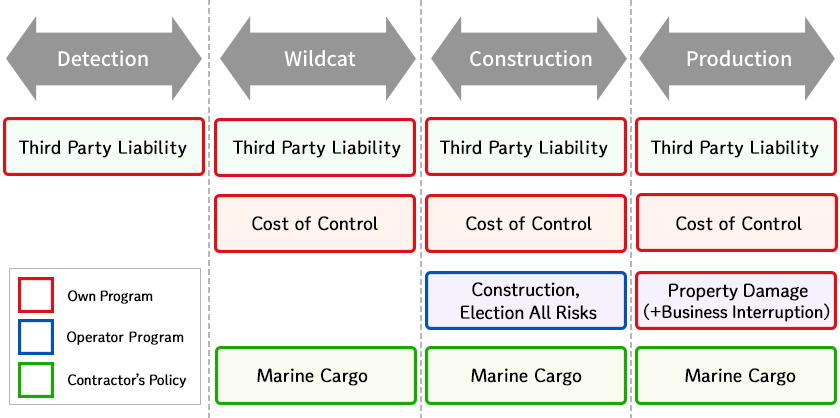Energy
Own Program VS. Operator Program
As offshore energy exploration and production of hydrocarbons require significant capital expenditure and are exposed to enormous financial risks, it is a common practice to form a consortium, namely an "unincorporated joint venture" in order to minimize the cost and the risks for one project.
When forming a joint venture, a Joint Operating Agreement (JOA) provides the rights and the obligations between the participants in details, including the types of insurance that will be undertaken pursuant to the JOA, and defines the liabilities that are to be insured against by each participant.
As most oil companies have their own (worldwide) package program, and as each oil company has its own needs and preferences, it is more customary nowadays for each participant to arrange its own program rather than joining the consortium program, except when there is an overriding reason to choose the latter.
Hereinafter the insurance program arranged by the operator for the whole consortium is referred to as the “operator program”, and the program arranged by each non-operating participant for his equity share is referred to as the “own program”. Below we will see which is more customary in each phase of the project, between utilizing the consortium program or purchasing an “own program”.
I Exploration Phase
(from various surveys of the prospective oil & gas fields to the determination of the likely oil bearing capacity)
The main risks exposed to the consortium at this stage are the blowouts and the third party liabilities (there are no assets which require physical damage coverage at this stage). It is more customary for each company to purchase its own policy in this phase, because the needs and ability to finance risk vary from one company to another.
II Construction Phase
(from commencement of procurement to first oil/gas)
The JOA authorizes the Operator to undertake all administrative functions including negotiating contracts with specialized contractors, dominantly with EPC type contractors. When underwriting a CEAR policy, insurer requires various information, including project details, FCV breakdown, and health/safety requirements for the project. Access to that information at the appropriate timing is not always easy, and this is one reason why the Operator-controlled approach is the universal method adopted by the global offshore oil and gas industry. As for COC, it is more customary for each company to purchase its own policy, as in the Exploration Phase.
III Production Phase
(from completion/handover to the end of the project)
It is more customary for each company to purchase its own policy, as in the Exploration Phase.
IV A diagram showing necessary coverage
(in each phase of the offshore energy exploration and production)


